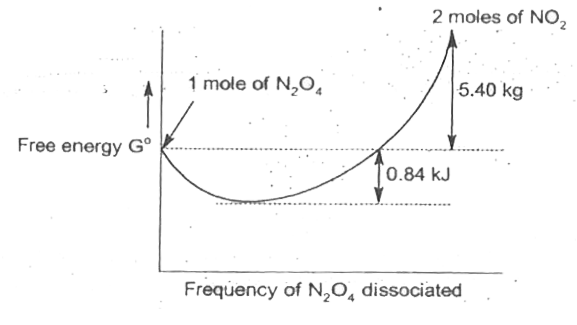The free energy change ΔG=0, when
The process is in equilibrium
Topper's Solved these Questions
- CHEMICAL THERMODYNAMICS BOOK - ICSECHAPTER - CHEMICAL THERMODYNAMICS EXERCISE - SHORT ANSWER TYPE QUESTIONS
63 Videos
- CHEMICAL THERMODYNAMICS BOOK - ICSECHAPTER - CHEMICAL THERMODYNAMICS EXERCISE - ESSAY (LONG ANSWER) TYPE QUESTIONS
32 Videos
- CHEMICAL THERMODYNAMICS BOOK - ICSECHAPTER - CHEMICAL THERMODYNAMICS EXERCISE - REVIEW EXERCISES (Fill in the blanks )
6 Videos
- CHEMICAL BONDING AND MOLECULAR STRUCTUREBOOK - ICSECHAPTER - CHEMICAL BONDING AND MOLECULAR STRUCTUREEXERCISE - NCERT TEXT-BOOK EXERCISES ( WITH HINTS AND SOLUTIONS)
47 Videos
- CLASSIFICATION OF ELEMENTS AND PERIODICITY IN PROPERTIESBOOK - ICSECHAPTER - CLASSIFICATION OF ELEMENTS AND PERIODICITY IN PROPERTIESEXERCISE - NCERT TEXT-BOOK. EXERCISE (With Hints and Solutions)
63 Videos
Similar Questions
The free energy change, ΔG = 0, when
View SolutionWhat is the free energy change, 'ΔG' When 1.0 mole of water at 100∘C and 1 atm pressure is converted into steam at 100∘C and 1 atm pressure
View SolutionThe relationship between the free energy change (ΔG) and entropy change (ΔS) at constant temperature (T) si
View SolutionA reaction is spontaneous if free energy change ΔG , for the reaction is negative . The question arises, how we can explain , the spontaneous of reversible reaction taking the example of dissociation equilibrium N2O4⇔2NO2(g) the variation of free energy with the fraction of N2O4 dissociated under standard conditions is shown in the figure below.

When 2 moles of NO2 change into equilibrium mixture the value of ΔG∘ is
View SolutionFor the reaction, NH4Cl(s)→NH3(g)+HCl(g) at 25∘C, enthalpy change ΔH=+177kJmol−1 and entropy change ΔS=+285Jmol−1K−1. Calculate the free energy change ΔG at 25∘C and predict whether the reaction is spontaneous or not.
View SolutionWhat is the free energy change (ΔG) for galvanic and electrolytic cel ?
View SolutionFor a chemical reaction, the free energy change (ΔG) is negative. The reaction is
View SolutionThe equilibrium constant Kp for the homogeneous reaction is 10−3. The standard Gibbs free energy change ΔGɵ for the reaction at 27∘C(usingR=2calK−1mol−1) is
View SolutionThe equilibrium constant Kp for a homogeneous gaseous reaction is 10−8. The standard Gibbs free energy change ΔGɵ for the reaction (usingR=2calK−1mol−1) is
View SolutionA reaction is spontaneous if free energy change ΔG for the reaction is negative . The question arises, how we can explain , the spontaneous reversible reaction. Taking the example of dissociation equilibrium N2O4⇔2NO2(g) the variation of free energy with the fraction of N2O4 dissociated under standard conditions is shown in the figure below.

When 1 mole of N2O4 changes into the equilibrium mixture the value of ΔG∘ is
View Solution
